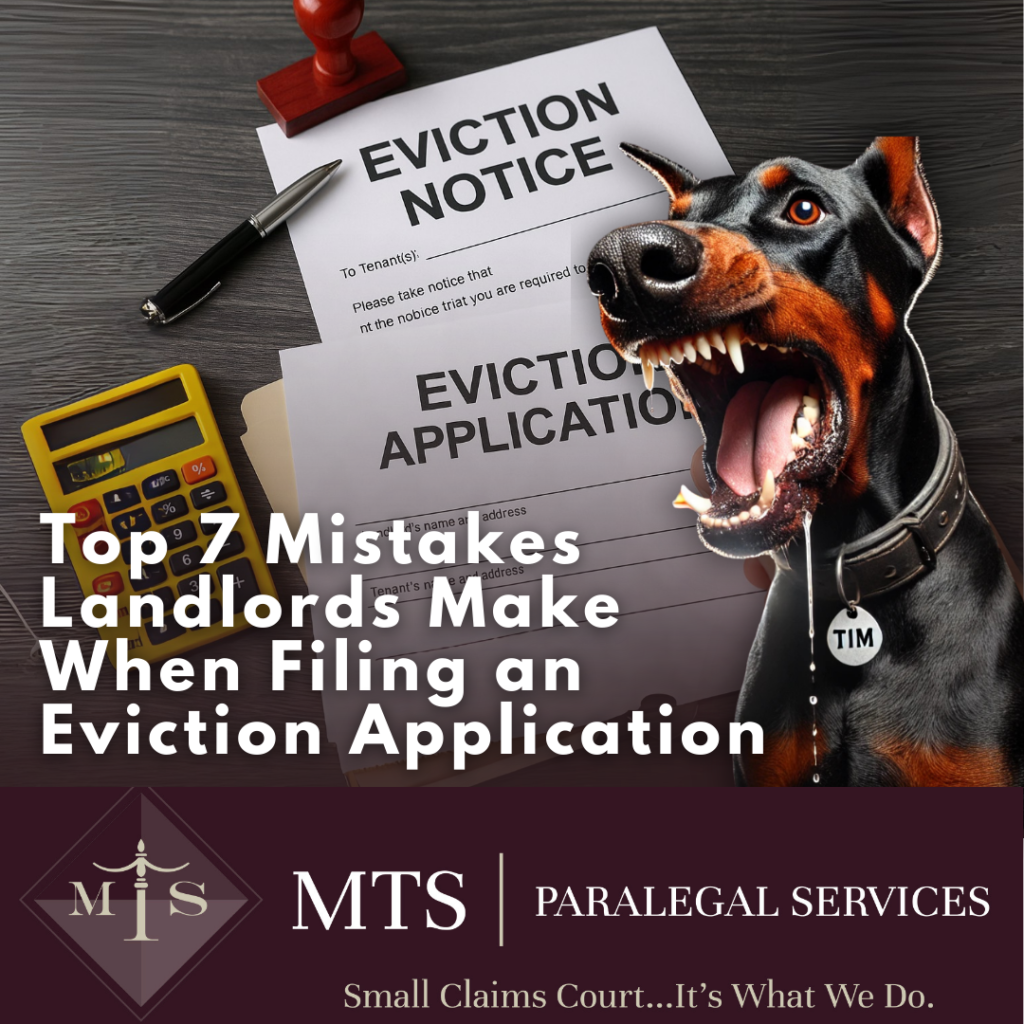
Top 7 Mistakes Landlords Make When Filing an Eviction Application
Filing an eviction application in Ontario is a legal process governed by the Residential Tenancies Act, 2006 (RTA) and adjudicated through the Landlord and Tenant Board (LTB). While landlords are entitled to evict tenants under certain circumstances, procedural compliance is essential. Errors in filing can result in delays, dismissals, or unintended legal consequences. The following are seven of the most common mistakes landlords make when filing an eviction application—and why legal guidance from MTS Paralegal Services can be essential to ensuring procedural accuracy.
1. Serving the Wrong Notice or Using the Wrong Form
Evictions in Ontario require the correct form of notice based on the grounds for termination. Whether for non-payment of rent (Form N4), persistent late payment (Form N8), or landlord’s own use (Form N12), each notice has unique statutory requirements. Serving the incorrect form or failing to use the most recent version may invalidate the application.
2. Inadequate Service of Notice
The method and timing of serving a notice is legally regulated. Improper service—such as hand delivery when not permitted, or failing to allow the prescribed notice period—can render the notice ineffective. Even minor deviations from service rules may result in dismissal of the application by the LTB.
3. Miscalculating Deadlines
Many eviction applications are dismissed due to errors in calculating timeframes. For example, failing to allow the tenant the full notice period, or filing too early or too late, may be grounds for dismissal. Adhering to statutory timelines is critical to the success of the application.
4. Incomplete or Inaccurate Information on the Application
The eviction application must align precisely with the notice served. Inconsistencies between the notice and the application—such as incorrect names, dates, or rental amounts—may lead to procedural defects. The Landlord and Tenant Board has strict requirements for accuracy in all filings.
5. Failing to Provide Evidence or Attend Hearings
Landlords bear the burden of proving their case at the hearing. Failure to submit documentary evidence (e.g., rent ledgers, communication records, or maintenance logs) or absence from the hearing can result in dismissal. The LTB may proceed in the landlord’s absence and deny the eviction request.
6. Including Illegal or Unenforceable Clauses in the Lease
Some landlords unknowingly rely on lease provisions that are unenforceable under Ontario law. Clauses that attempt to waive tenant rights or impose unlawful penalties may be struck down by the LTB. Reliance on such provisions may undermine the legal basis for eviction.
7. Attempting “Self-Help” Evictions
Changing locks, shutting off utilities, or otherwise attempting to remove tenants without LTB approval is strictly prohibited. Such actions not only jeopardize the eviction process but may expose the landlord to liability under the RTA. Only the LTB has the authority to issue an eviction order.
Secure Proper Representation Before Filing
Eviction is a regulated legal process, not a private remedy. A legally sound approach requires understanding the nuanced requirements of the LTB, the RTA, and related procedural rules. Landlords who attempt to navigate this process without legal support risk avoidable delays, financial losses, and adverse legal rulings.
MTS Paralegal Services provides experienced legal representation for landlords navigating the eviction process in Ontario. From preparing and serving notices to representing landlords at LTB hearings, MTS ensures procedural compliance and effective advocacy.
Contact MTS Paralegal Services at 226.444.4882 or visit mtsparalegalservices.com for professional assistance.
This content does not constitute legal advice. For up-to-date guidance or legal advice specific to your situation, please contact MTS Paralegal Services or call (226) 444-4882.
